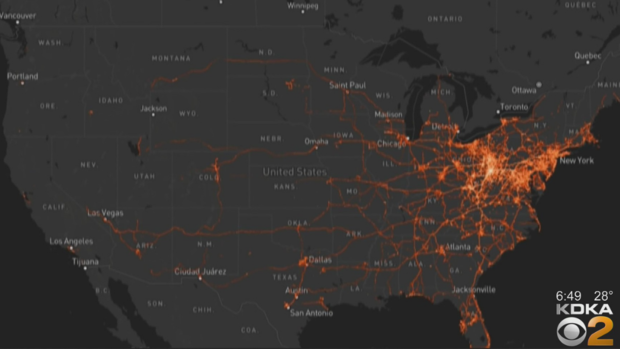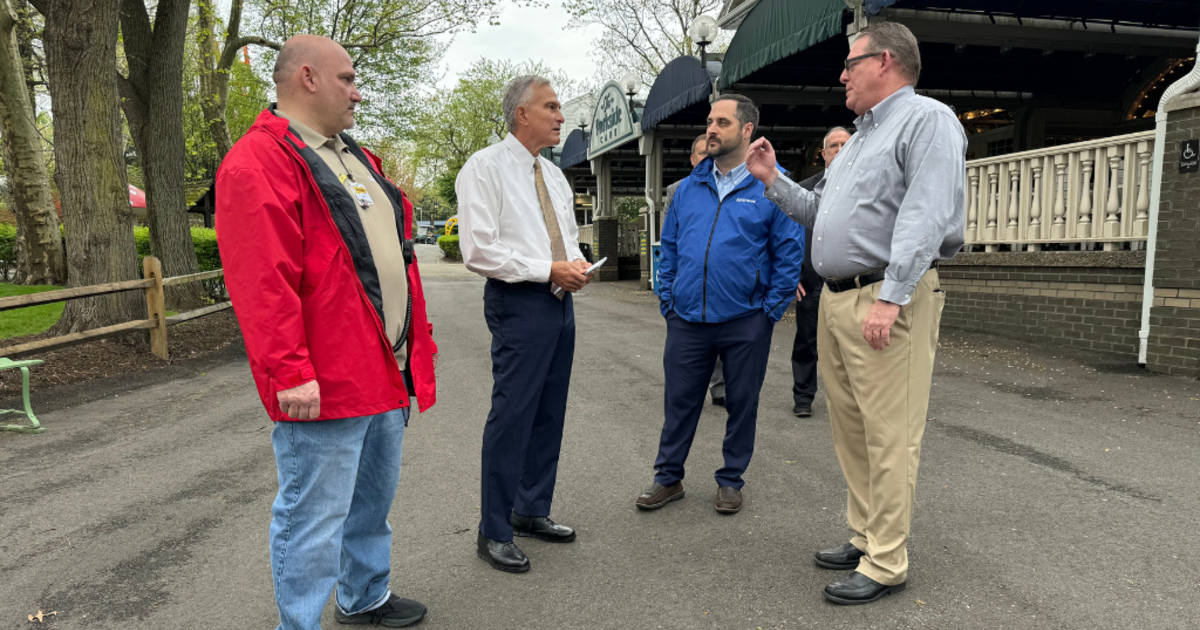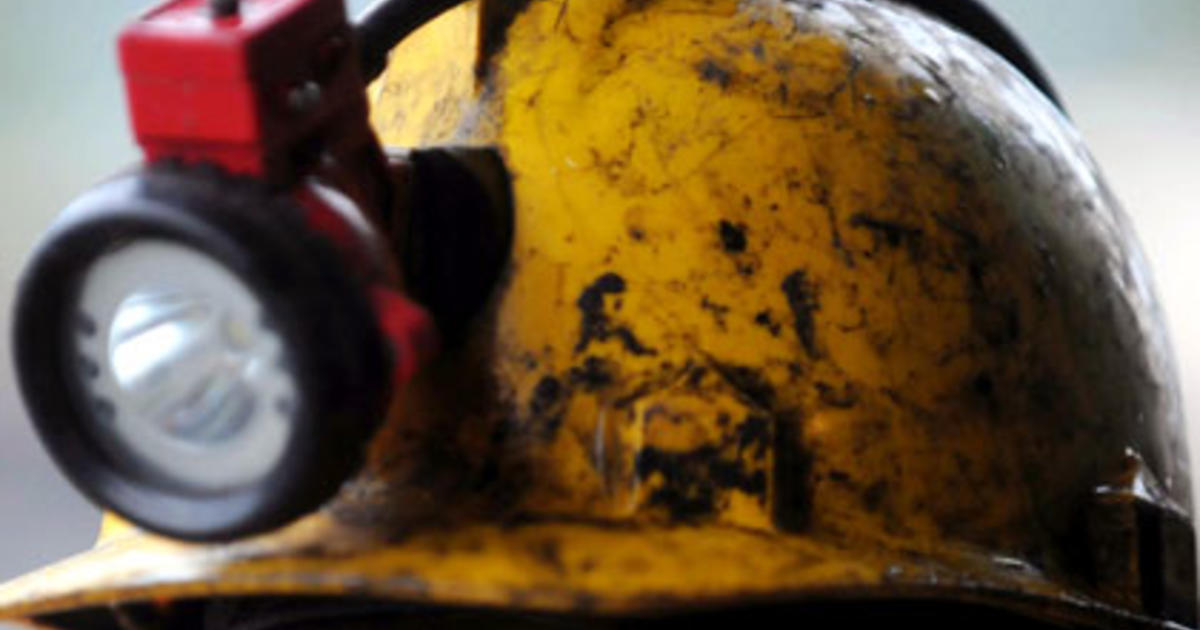'Think Of Colleges As Basically Mass Gatherings': Tectonix Map Traces COVID-19 Spread By College Students Heading Home For Holidays
PITTSBURGH (KDKA) -- This is the week health experts say we will start seeing the Coronavirus impact from the Thanksgiving holiday.
A lot of focus on this current surge is being put on the impact of the migration of college students, who have headed back home after the fall semester.
New technology that tracks the movement of cell phones, without specific identification of the phone's owner, is now able to illustrate the college student spread.
The phone information is compiled by Tectonix.
By tracing the cell phones from the students at Penn State, Mike DiMarco, from Tectonix, says, "We isolated just the outline of the college itself as the initial polygon where we wanted to start with the data set."
The "heat map" of all those phones shows a brightly lit cluster in State College the week before Thanksgiving. DiMarco says they then looked at the signals during Thanksgiving weekend.
"As we zoom out, then we are able to look at secondary pings on those same devices as they spread out across the country," he said.
Literally all over the country.
Dr. Amesh Adalja, of Johns Hopkins, says this is a striking illustration of the spread potential.
"I do think that you have to think of colleges as basically mass gatherings, and they do travel a lot, and we will likely see some spread from college campuses, because we know that college campuses have various degrees of control of the virus," Dr. Adalja said.
Dr. Adalja says the map visualization should be alarming.
"So, college students in general are going to have some level of infection. And when they travel to their hometowns, when they start to hang out with your high school friends, you're likely to see transmission events. So this is something that will help the virus disperse itself around the country," he said.
The idea of tracing cell phone movement to follow dispersal is valuable, says Dr. Adalja.
"There is value in understanding travel patterns and transportation and how much mobility people have because this is a virus that thrives on social interaction, so understanding how widely a person's social network is based on their hometown, where they're coming from, where they're going, all of that helps you understand what to expect. I think that it really underscores the fact that we need to think about college students as high-risk contacts," Dr. Adalja said.
KDKA's John Shumway Reports:
DiMarco says the information can help drive public health movements.
"Put in the right hands, these are the tools that can help public health policy experts and medical facilities really understand where they need to put resources or enact policies that can slow the spread down," DiMarco said.
Dr. Adalja says its fortunate so many universities are not returning to campus activities until January.
"The less that you're mixing with other individuals, the better it is when you think about this virus and its spread," he said.
It also should be a red alert to everyone. You may not live on or near a college campus, but the "college spread" from Thanksgiving has already happened.
"You have to remember that we're in a new normal with this virus that's threatening us with every step we take outside the door, and you have to behave as if you're in a pandemic, you have to think about the commonsense precautions you can take that will stop this virus from transmitting," Dr. Adalja says.
Whatever impact college students are going to have on the spread of COVID-19, Dr. Adalja says should become clearer later this week.




